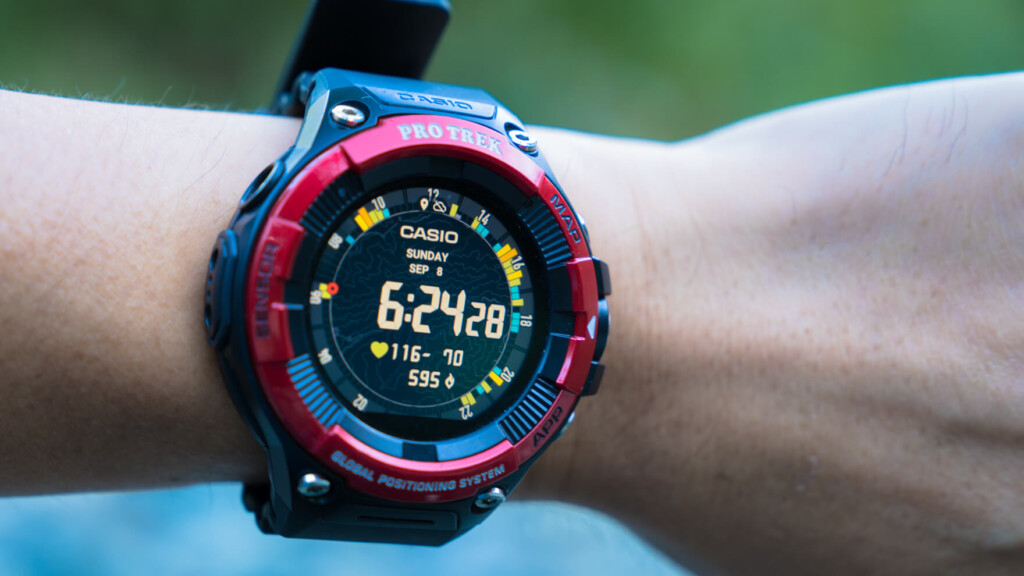
Fastest review: Casio PRO TREK Smart WSD-F21HR The long-awaited heart rate measurement function has been added. Outdoor smartwatch for those who want to play seriously
CASIO PRO TREK Smart is released , which you can play seriously Of course, I've been able to play well before.
The recent GPS smartwatch market is where new models appear every month. Apps that can finally use offline mountain climbing maps on Apple Watches, and it seems certain that the increasing use of smartwatches is becoming more and more intense in the competition. As global brands compete, Casio Computer, one of the few domestic manufacturers, released the latest model WSD-F21HR (hereinafter referred to as F21), the PRO TREK Smart
The highlight of this episode is that it has the long-awaited heart rate measurement function. And it's as realistic as ever. This site, where I use new models every time, I was able to use the sample machine that was before it was released earlier this time, so what has been new and to be honest, how can it be used? We would like to quickly report on the details while comparing them with past models.
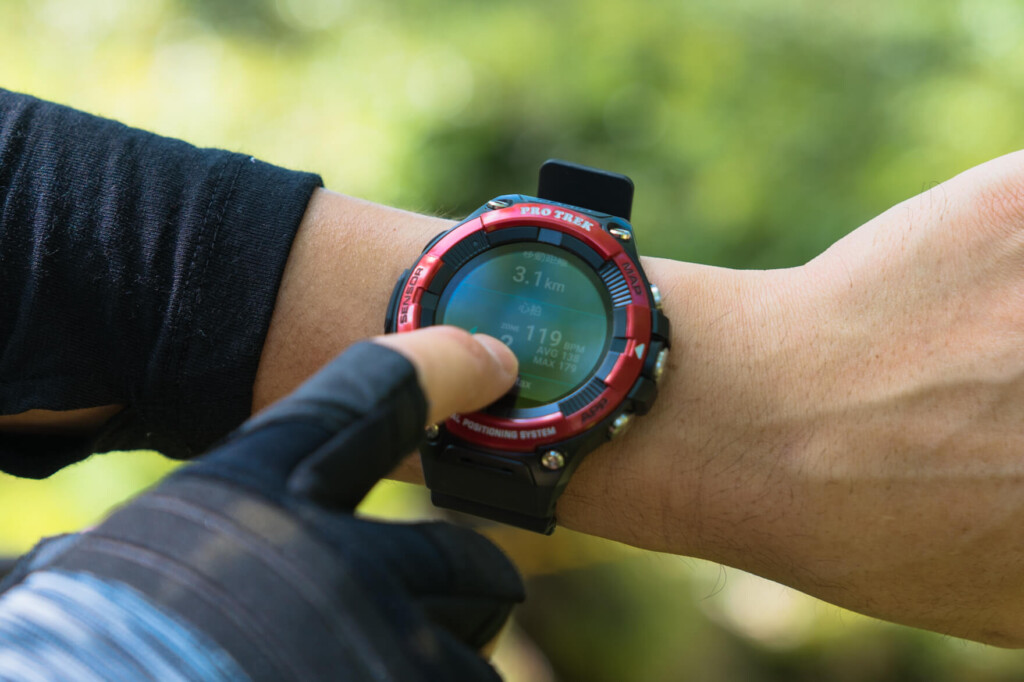
table of contents
table of contents
Appearance and hardware
The size has returned to its original size and lighter weight
Anyway, first we'll check the exterior. As the model number "F21" indicates, the size of the body, which has been reduced to the size of the F30 , the previous generation (F20) , and is about 61.7 x 57.7 x 16.8 mm, making it a slightly rough G-SHOCK-like size. This may have been an issue due to the addition parts, but considering everyday use, it seems like the compact size that could be achieved with the F30 However, considering the operability of a touch panel wristwatch, the actual size is just right, and you'll get used to it quickly, so I think this will become a matter of preference.
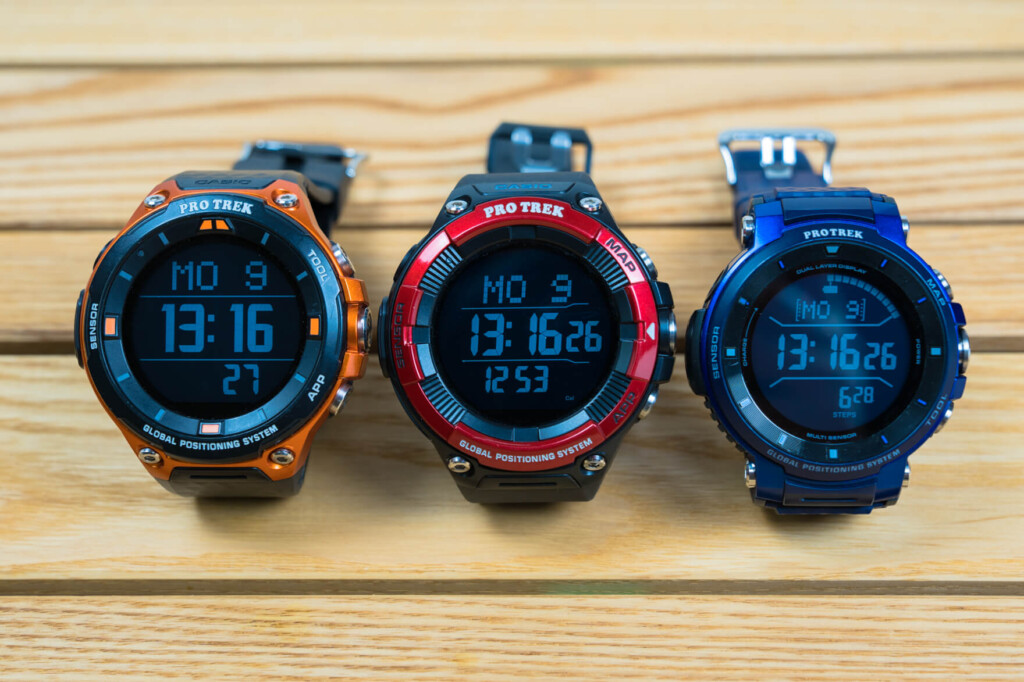
The size of the F21 (center) is almost the same as the previous generation F20 (left). Compared to the F30 (right), it's definitely bigger.
The weight is 81g, which feels very lightweight despite its size. Compared to the F20 (one generation ago), which is roughly the same size, it is not only about 10g lighter, but it is also lighter than the latest miniaturized model, the F30.
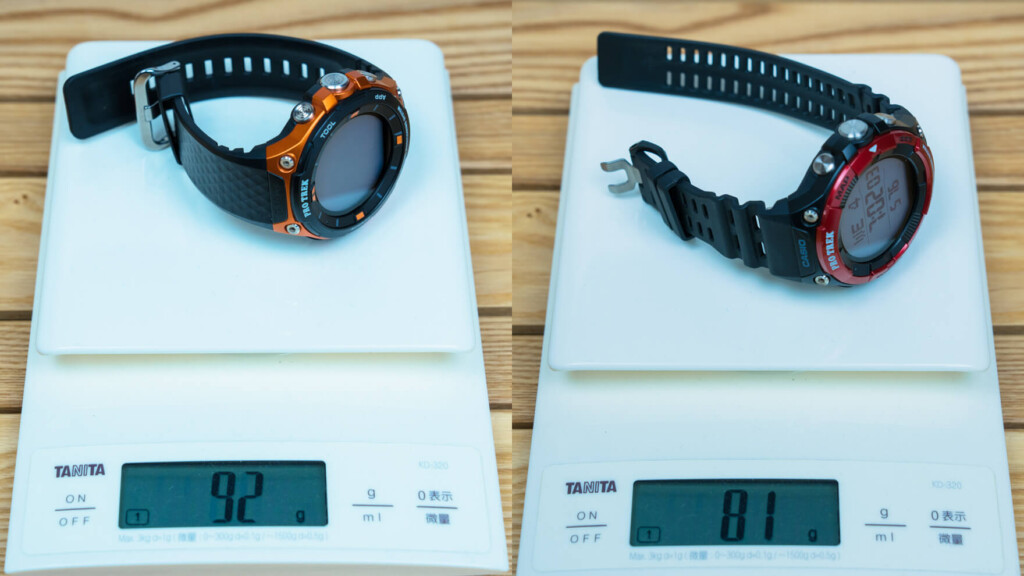
A comparison of the weights of the F20 (left) and the F21 (right). Despite the size of the body, the weight was quite low. By the way, it's almost the same or light as the latest F30.
The soft urethane band is comfortable to wear. The buttons are as easy to use as ever
The belt area was definitely improved. The soft urethane band remains the same, making it slightly thinner and more flexible, and the double-pin buckle with two holes makes it less likely to slip.
The hole spacing has also become smaller than before, making it even finer and more adjustable, and the bellows-like play around the connection to the case improves the fit. It is not as good as it can be compared to highly stretchable silicone rubber belts.
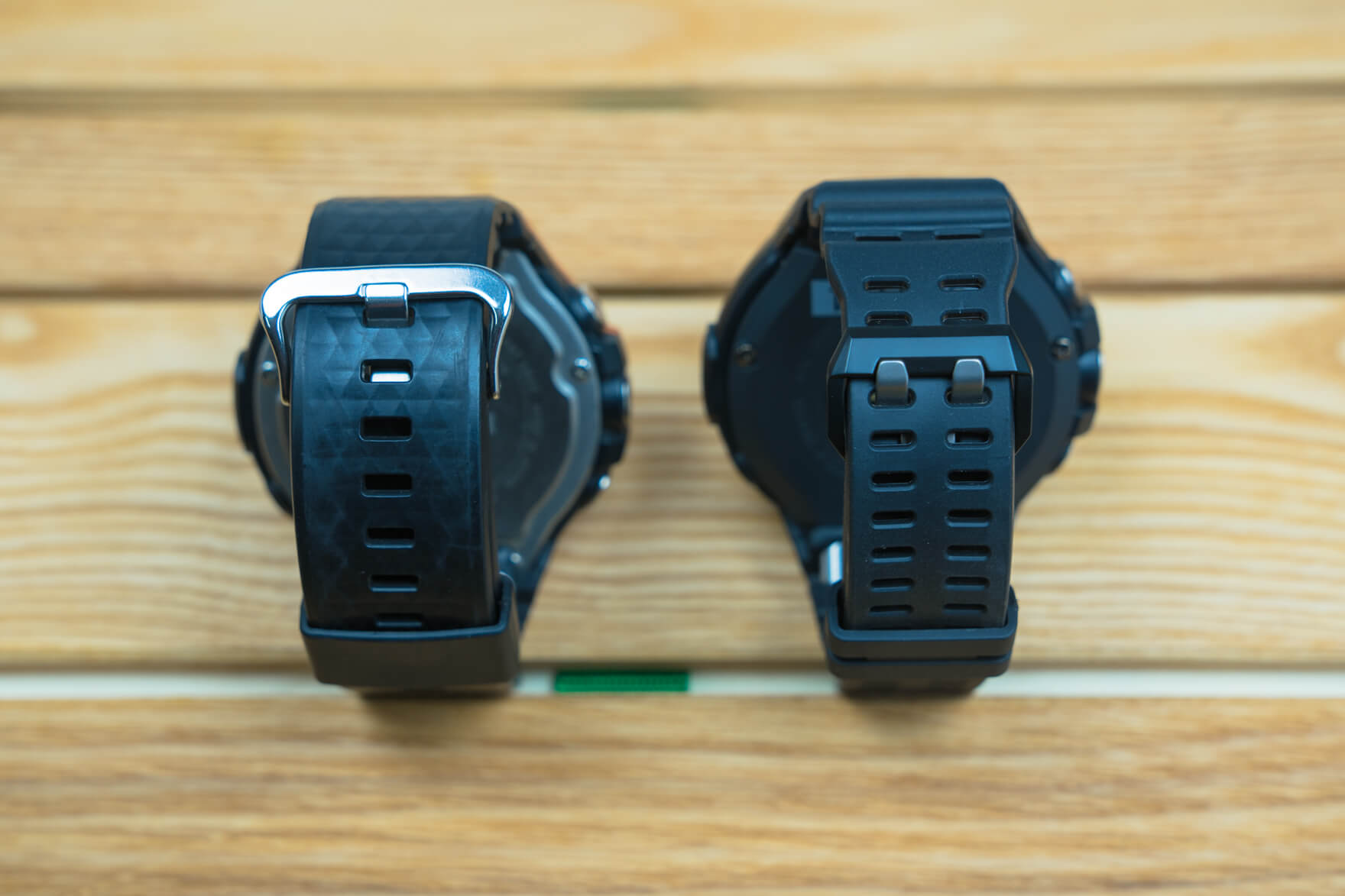
The soft urethane band of the F21 (right) is clearly thinner and more flexible than the F20 (left). The hole spacing has also been narrowed, improving adjustment and fit.
The buttons are the same as before, with three simple configurations on the right. The large size that can be pressed without any gloves on, the comfortable, comfortable feel of the push, and the guard that prevents malfunctions are impressive. The basic functions that can be called with buttons are "map", "App menu", and "Activity (Apps)," but I'm also grateful for the freedom to be able to customize it yourself.
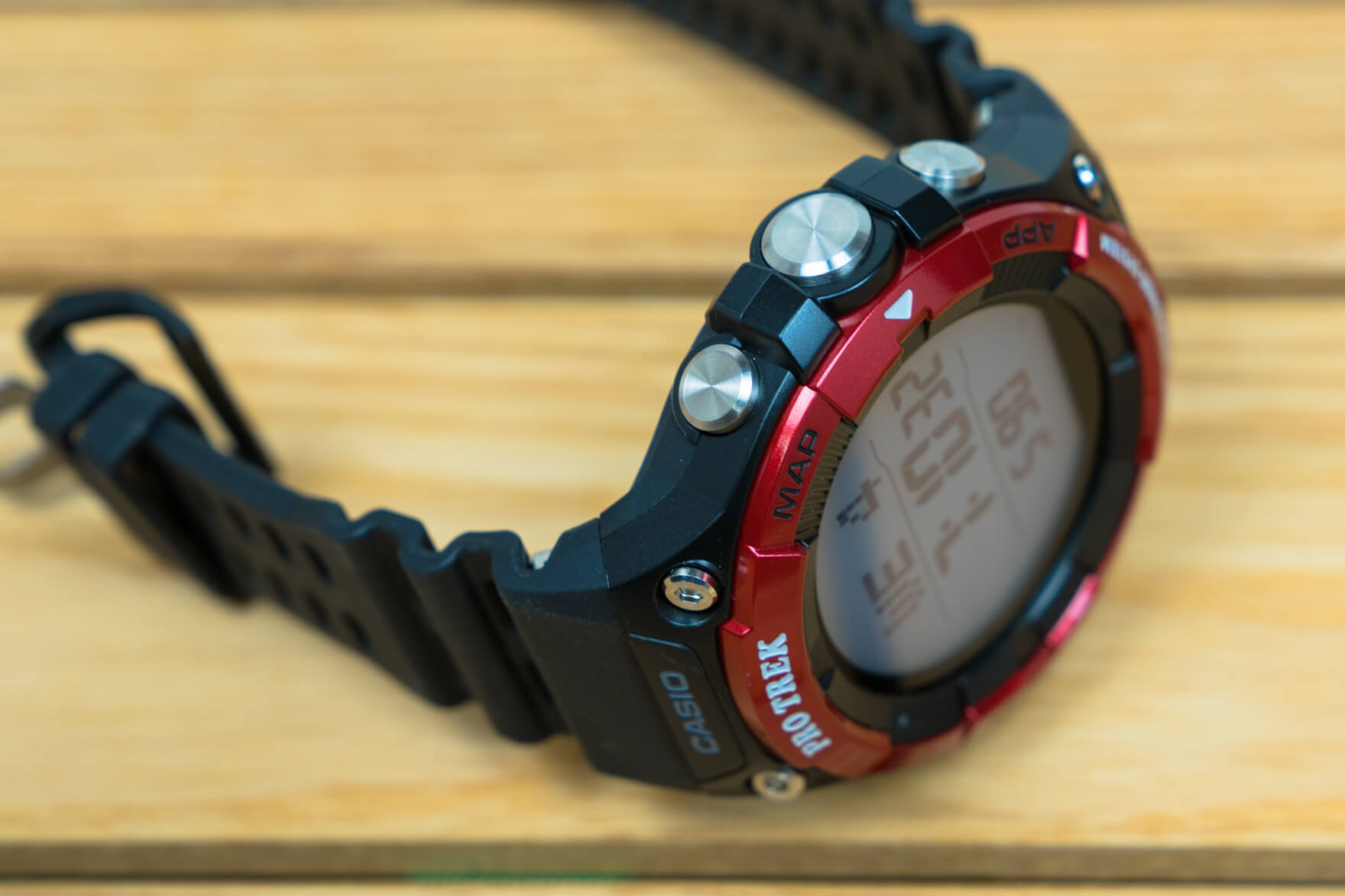
I really like the F20-series button feel, which is easy to press and has a nice design.
The UI of the double layer LCD display is almost the same as the latest version
The F21 's hardware configuration is basically based on the F20, so the display is the same 1.32 inch (320 x 300 pixels) TFT LCD as the previous generation. However, the bright, high-resolution screen is easy to see even in sunlight, and has a great ability to stand out from other models, so there is no problem with visibility this time either.
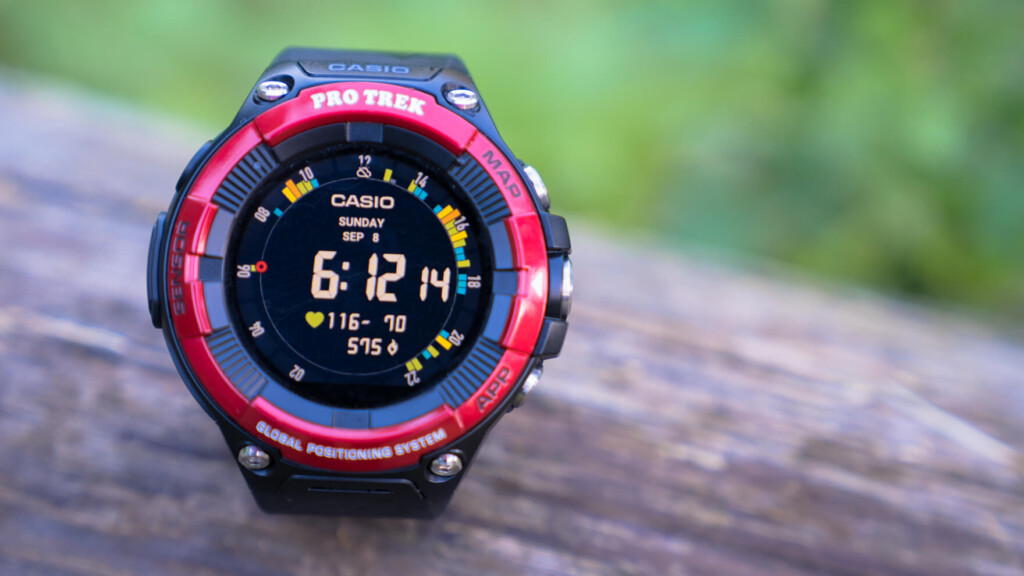
The high visibility of Protrek Smart should be appreciated more.
On the other hand, since the arithmetic processing function has the same performance as the F30, aside from some functions, it has software and interfaces that are almost the same as the F30. For example, the double-layer display is a major feature of the PRO TREK Smart series. The latest generation of power-saving monochrome display allows you to set a variety of displays, including not only "date and time", but also "all-all, pressure and time displays", and "battery capacity and pedometer".

The convenient monochrome display inherits the evolution of the F30.
I actually tried using it on a hike
The dedicated watch face "Heartrate" makes me excited to watch
I put on an F21 and tried all the things I could do, including city runs, mountain climbing, and trail runs.
The highlight of this new release is the heart rate measurement function. First, let's take a look at general usage of this feature. This model comes with a dedicated watch face called "Heart Rate" that displays the measured heart rate in real time (photo below).
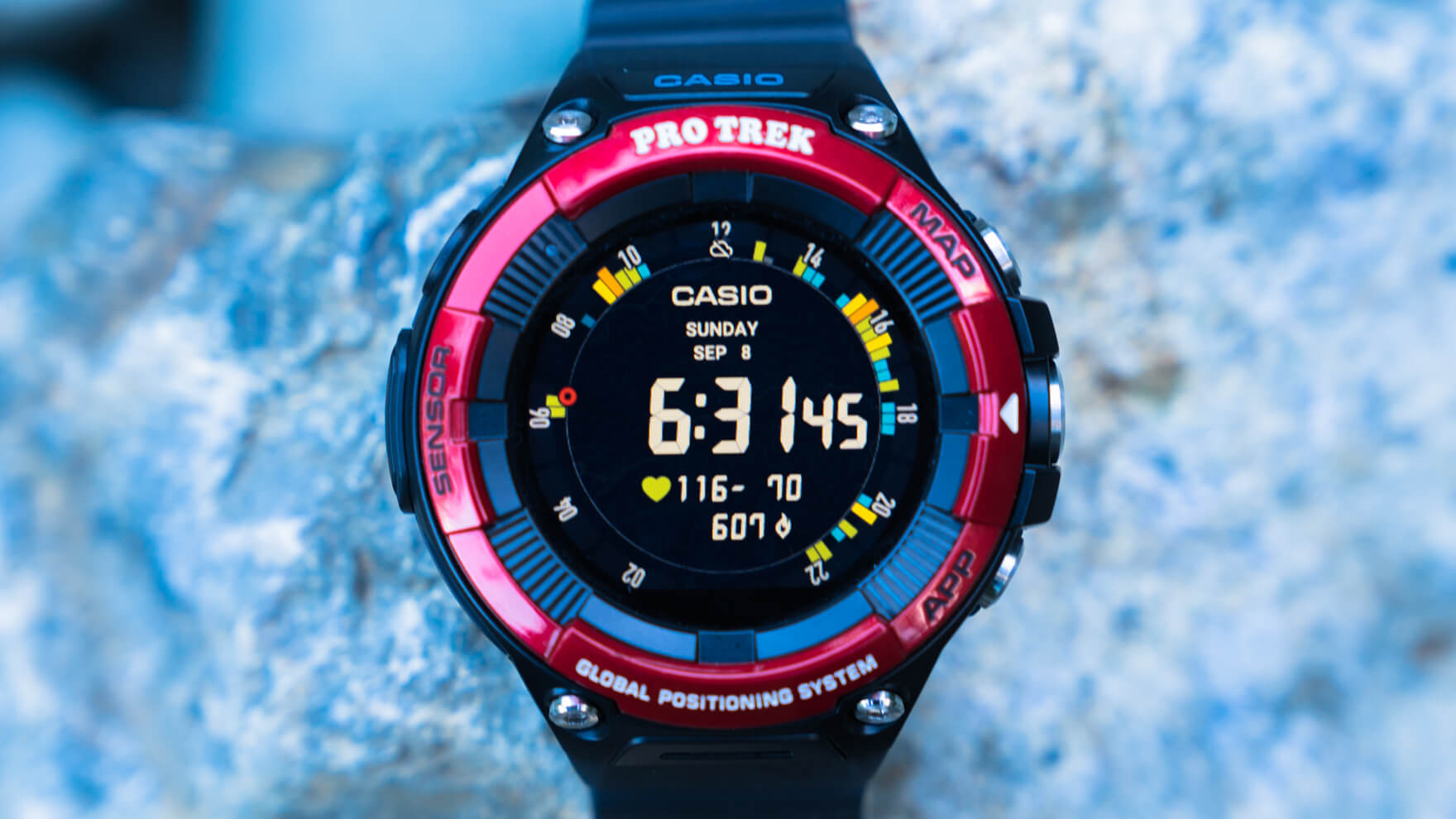
The latest watch face makes it clear at a glance how much you've been active per day. It would be great if I could save this data.
Usually, the "max/minimum heart rate" and "heart rate zone history" for the last 24 hours are displayed around the dial. When this detects "walking/running/bicycle" using the built-in accelerometer, it automatically switches to the measurement mode screen and starts measuring. This will display your current heart rate zone and your current heart rate + maximum/minimum heart rate for a day (photo below). Recently, it seems that more and more people are using their heart rate to practice efficient training, including running, but with this watch face, you can see how things are going now. It will support you in your training.
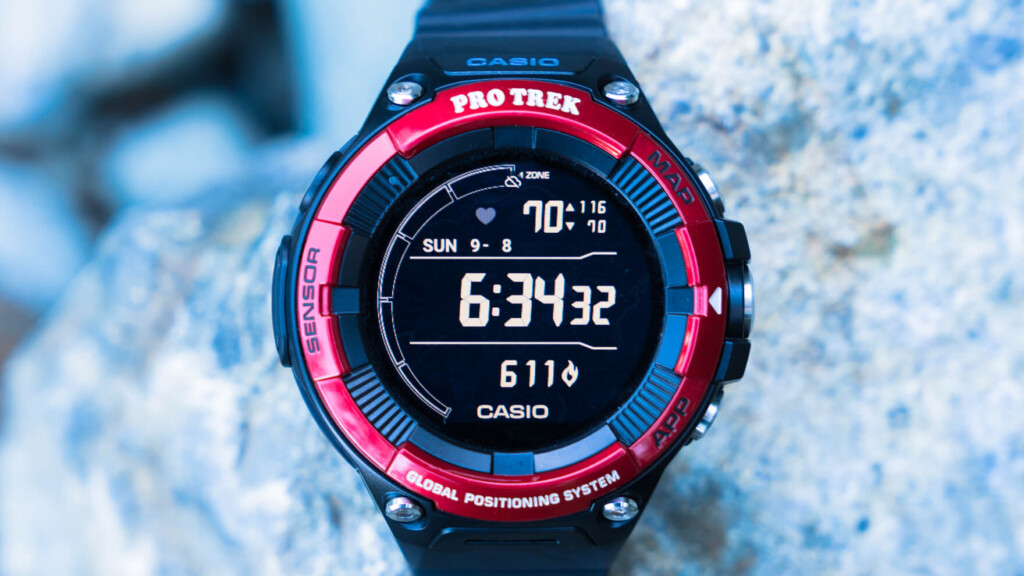
When motion is detected, it enters measurement mode. Perhaps it's high sensitivity, but I love how it sometimes activates even when walking normally.
The measured data is saved as history and
This heart rate measurement is always displayed in real time on the watch while wearing it, but it does not seem to be currently implemented a function that records and saves it as a history in some app and uses it like a life log. Personally, I was hoping that I could keep track of my heart rate on Google Fit to help maintain my health and improve my life, so that's a bit disappointing.
However, when I checked this point with Casio,
The vastly evolved genuine app "Activity" has suddenly emerged into a regular app! ?
By linking the heart rate monitor, anyone can easily walk without fatigue
If you want to fully utilize the heart rate measurement function for activities such as mountain climbing or trail running, it is more convenient to use the original app "Activity" than the watch face above. Until now, I've been using YAMAP only, and to be honest I rarely use it, but from the F21, the relationship may change completely without any joke.
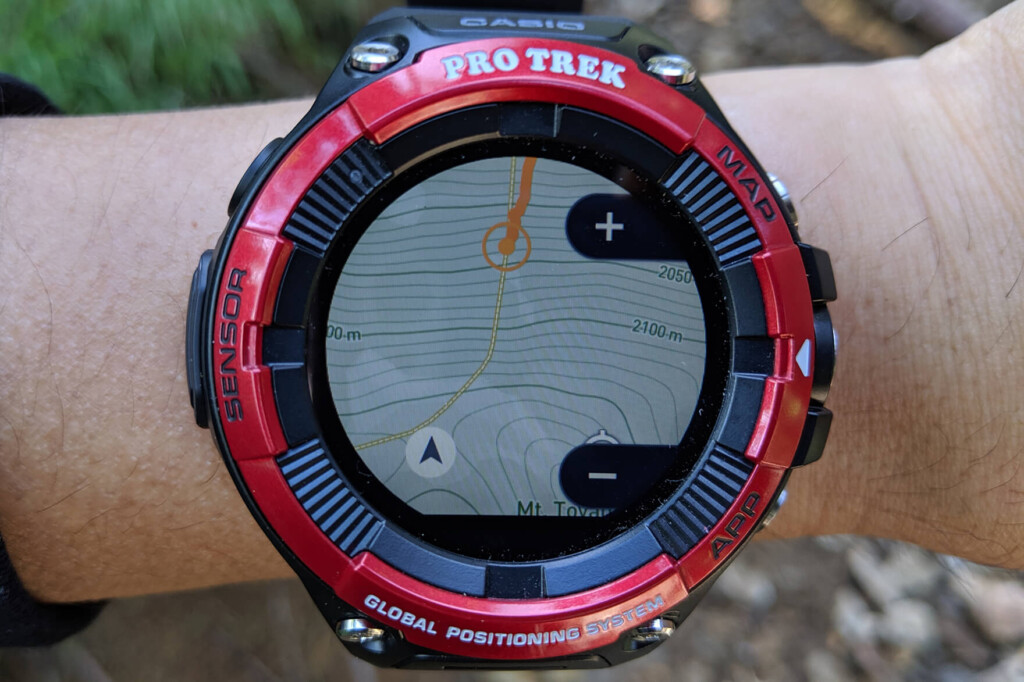
The map is as clear as ever and easy to use. The number of times you expand the map is reduced dramatically.
One of the major evolutions of the Activity app is the addition of "current heart rate (heart rate zone) and VO2MAX values" among the indicators that can be seen in real time during trekking. Furthermore, if you set your target heart rate zone in advance, there is a function that will notify you by display and vibration when you cross that zone. In this regard, other apps allow you to check real-time using the STRAVA app, and at this time you cannot check or record it.
What is useful to know your current heart rate (heart rate zone)? It is difficult to explain in detail here, so roughly speaking, your heart rate is closely linked to your own exercise intensity, and by looking at your heart rate, you can tell how much you are currently moving from the limit of your physical strength, meaning you can maintain an amount of exercise that will not lead to over-pace, and on the other hand, you can do the waste-free exercise you want, such as by doing efficient training to improve your muscle strength and stamina.
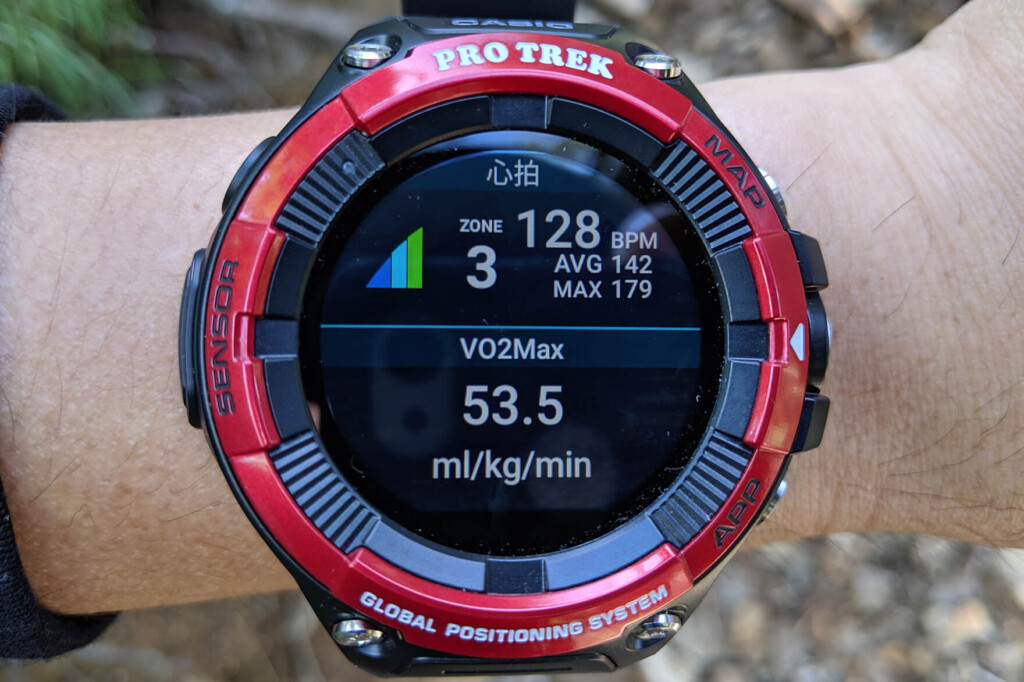
If you set your own resting heart rate and maximum heart rate, your current activity level and VO2MAX will always be measured.
Another factor is the VO2MAX value, which indicates the maximum amount of oxygen that can be taken into the body in one minute, and this value indicates a certain level of a person's endurance. The average average for ordinary people is 40ml/kg/min, and the Olympic long-distance athlete level is 80-90ml/kg/min, but there are no results determined by the equipment measured or statistics (I actually felt that the VO2MAX value of the F21 was a slightly milder number). It's healthy to just enjoy the way your own values improves through training and experience, rather than absolute values.
Furthermore, it would be a waste to simply introduce tips on how to walk by purpose using a heart rate monitor when climbing or trail running here, and I would like to explore a little more in my own way, so I will go into more detail in the next review. Stay tuned!
New activity "Trail Running" added
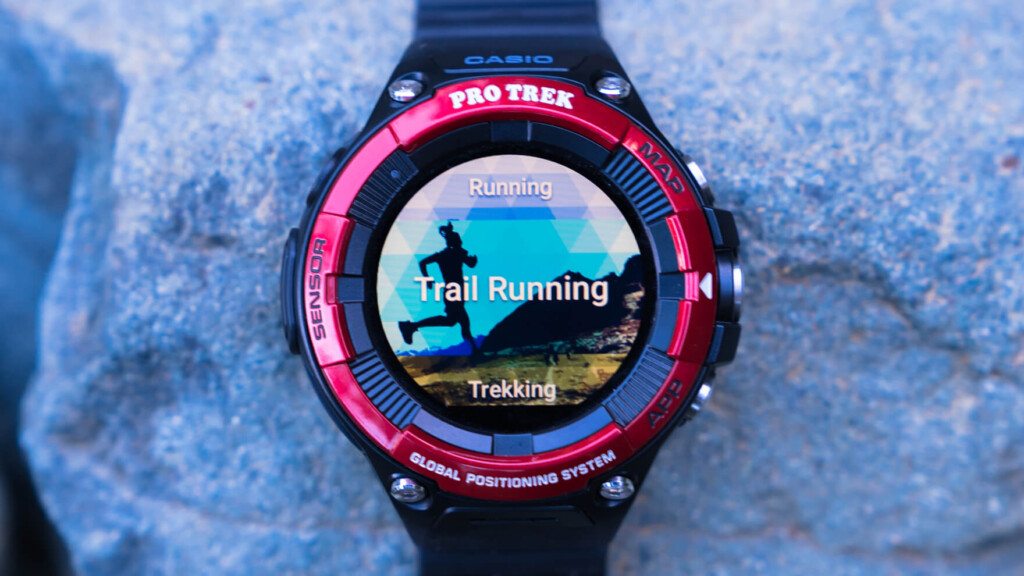
The newly added Trail Running can be used for trekking depending on the settings.
Another extra feature you won't miss in the Activities app is the addition of the "Trail Running" category. Here, both altitude information such as elevation and horizontal information such as distance and speed are displayed, allowing you to reach its itchy areas, which were difficult for both running and mountain climbing. That alone is a sufficient evolution, but what's nice about it is that it also allows for the "flexible customization of the display content," which was possible with other smartwatches for athletes, making it crucially easier to use.
The default display items for the Trail Run activity are as follows:
- Map screen
- Heart Rate Zone, Current Heart Rate/Distance/Elevation screen
- "Advanced Trend Graph" screen
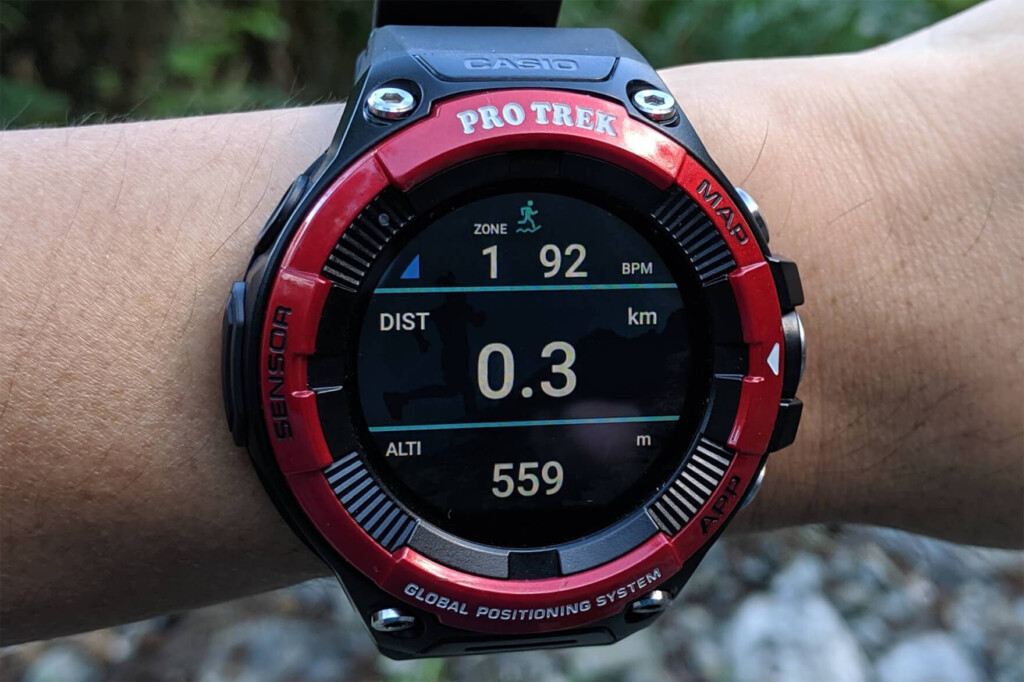
Basically, swipe sideways on the screen where three indicators are displayed per screen. The photo shows the Heart Rate Zone, Current Heart Rate/Distance/Elevation screen.
With this customization, you can increase the number of screens with separate display items in the top, middle and bottom rows to up to four screens (plus maps), and you can set them to display the items you like in some detail. However, for some reason, it is a strange situation where you can't currently select the VO2MAX value among these customizable indicators when running trails or running (even though it can be checked by default on trekking!).
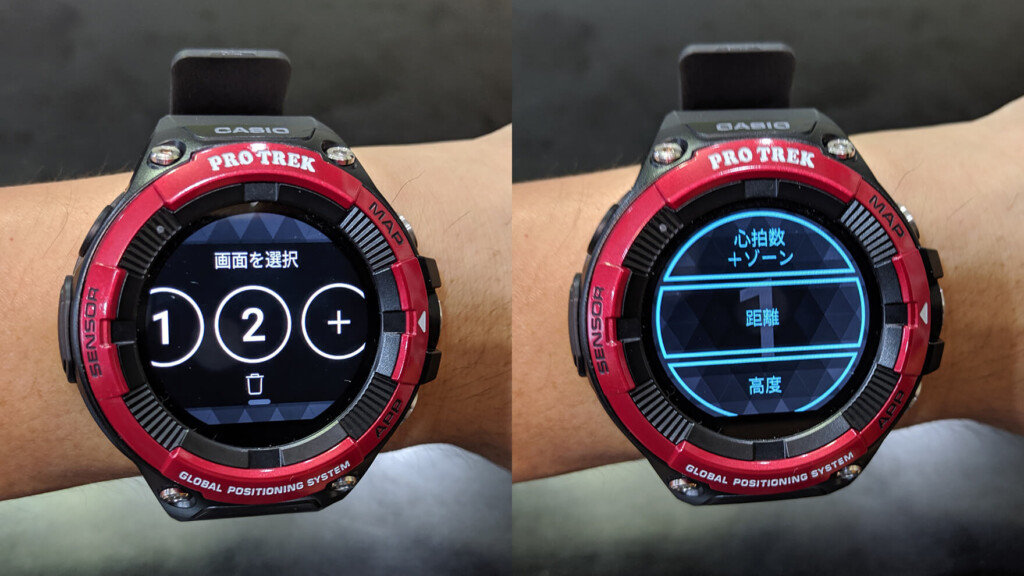
You can customize the number of screens and the display content of each screen using a simple UI like a smartphone screen.
Once the activity is finished, the measured data will be automatically backed up to Google Drive™, allowing you to check data that corresponds to the activity on Google Calendar™ on your smartphone. records "active time / total distance, average pace / average speed / records active time/
It was also stored as exercise on Google Fit, where "Route Display / Exercise Time / Distance / Steps / Calories Burned / Average Pace" was displayed.
Route imports are possible and can be used as navigation, making it extremely useful!
Finally, there are some small but useful evolutions. Before starting the activity, you can now import the gpx file downloaded from YAMAP or other sites, and display the route on the map in advance, allowing you to navigate through maps. This is plainly good. This will be extremely useful, especially in snowy mountains with unclear roads.
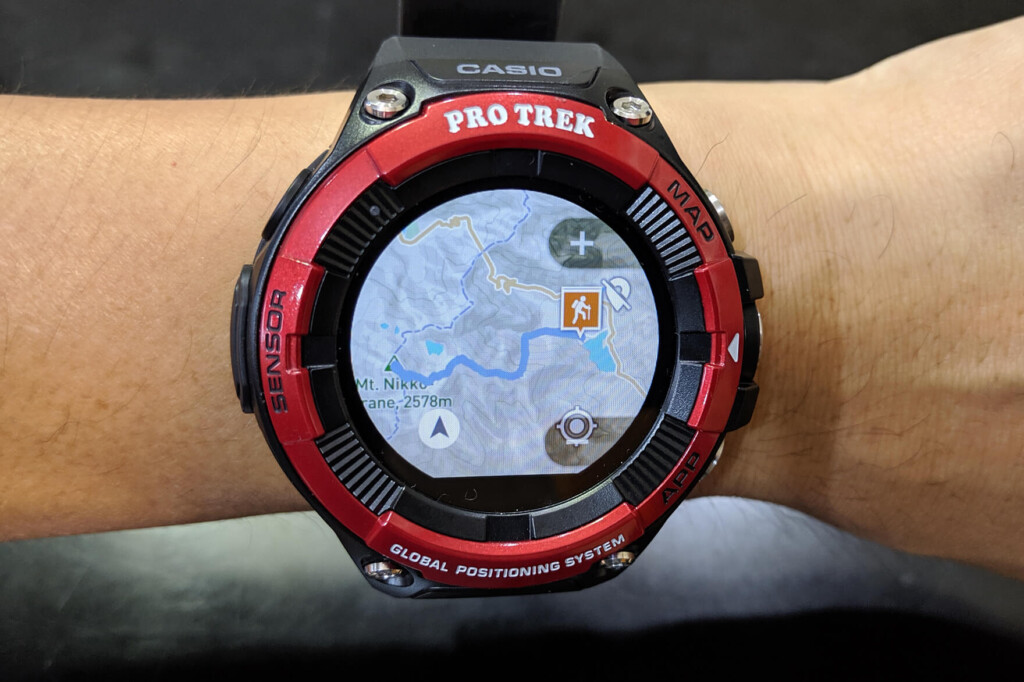
It appears that the routes imported from outside are loaded before the activity starts.
Finally, what is the battery consumption that you're worried about?
Just to be sure, I also checked the battery consumption. The F21 does not have the power saving mode (extended mode) installed on the F30, so it will be used for normal use when climbing and trail running.
I started at 99% in the morning, and used it without worrying about energy-saving settings such as turning it into airplane mode or lowest screen brightness, and when I reached the finish line after 6-7 hours including taking a break, the battery level was around 50%. Although we haven't made any strict comparisons, it seems to be the same as normal use of the F30 series, meaning that even long-distance day climbing is not necessary to worry about it being impossible unless you set it to a particularly energy-saving setting.
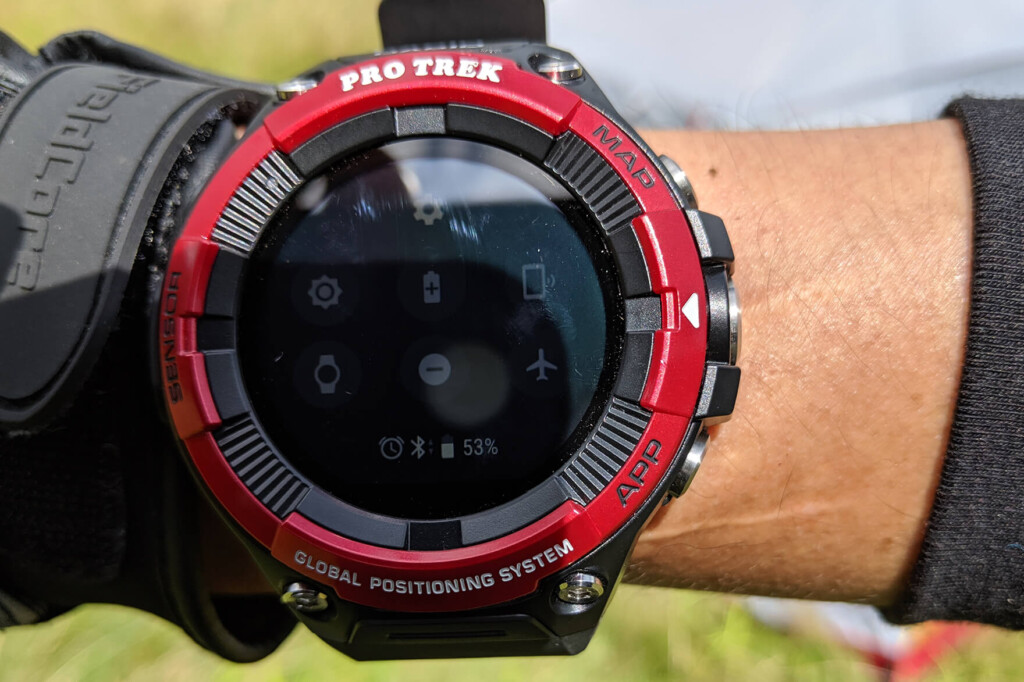
The battery was exhausted when we left after 7am and descended at around 1:30am. At this time, I didn't use airplane mode.
Summary: Once you realize the joy and safety of your own walking and running casually, the outdoors become even more fun.
Not only is it equipped with a heart rate monitor, but it also has a solid app that makes effective use of it, the new PRO TREK Smart will surely offer new ways to enjoy mountain climbing to those who have never analyzed their behavioral data with a smartwatch before. PRO TREK Smart as they have not been able to obtain detailed data up until now , they will be surprised at how easy it is to overturn the impression. And it's also attractive that you should never forget, it has a high cost-effectiveness that allows you to compete with your competition.
Compared to the F30, the size has been reduced in appearance in terms of everyday life, but on the other hand, it can be said that it has become a more satisfying device as an outdoor smartwatch that outdoor users seriously use to get serious about.
Next time, I would like to review practical usage by purpose and purpose in order to further utilize this smartwatch with a heart rate monitor.
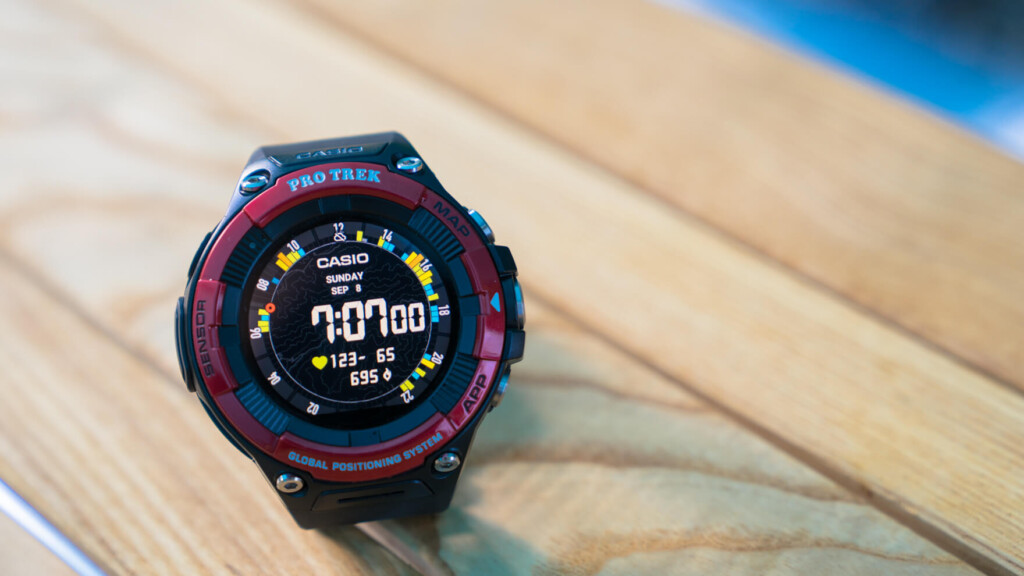
For more information or inquiries, please click here (official product page) .
In addition, useful information and latest information from manufacturers are available on PRO TREK's Facebook page


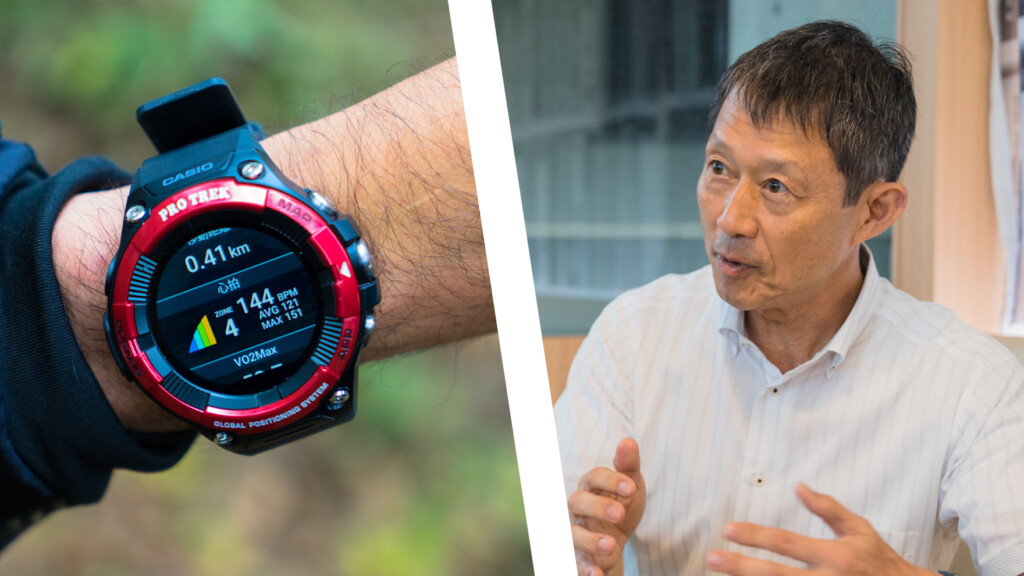 [We asked an expert] How to walk using the PRO TREK Smart WSD-F21HR, which can measure your heart rate, to help you improve your endurance without fatigue?
[We asked an expert] How to walk using the PRO TREK Smart WSD-F21HR, which can measure your heart rate, to help you improve your endurance without fatigue?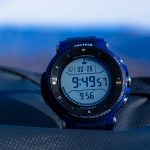 Review: We looked at how easy it is to use the Casio PRO TREK Smart WSD-F30 for mountain climbing and hiking.
Review: We looked at how easy it is to use the Casio PRO TREK Smart WSD-F30 for mountain climbing and hiking.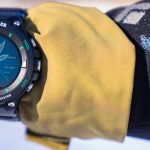 Review: Enjoy the winter outdoors with the winter-style Casio PRO TREK Smart WSD-F20X
Review: Enjoy the winter outdoors with the winter-style Casio PRO TREK Smart WSD-F20X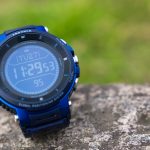 First Look: Casio PRO TREK Smart WSD-F30 Fastest Review What's new from the previous model?
First Look: Casio PRO TREK Smart WSD-F30 Fastest Review What's new from the previous model?